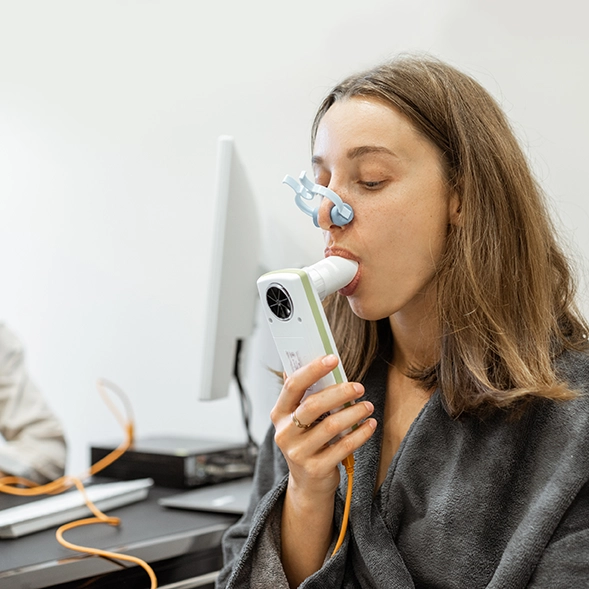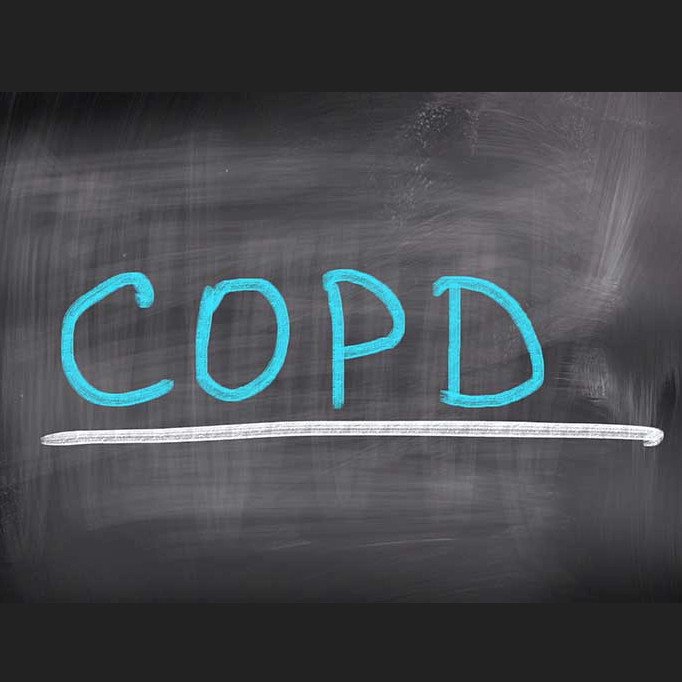Rationale: The presence of small airway dysfunction (SAD) has been linked to reduced lung function in individuals with chronic obstructive pulmonary disease (COPD). Having said that, limited knowledge exists regarding the relationship between SAD parameters detected through impulse oscillometry (IOS) and the decline in lung function, particularly in subjects with normal spirometry results.
Objective: To examine the correlation between baseline and annual changes in SAD parameters (assessed using IOS) and the decline in lung function.
Methods: In this study, data from the ECOPD cohort—a prospective, observational study conducted in China—was used to analyze the cross-sectional and 1-year follow-up data. A multiple linear regression model was employed to examine the relationship between baseline SAD parameters and impaired lung function. Additionally, a mixed-effects linear model was used to investigate the association between baseline SAD parameters and the annual changes in these parameters, as well as their impact on lung function decline.
Measurements and Main Results: A total of 1862 subjects with a complete questionnaire, lung function, and IOS test at baseline were included in the study. Among them, 1404 subjects completed the 1-year follow-up IOS test. No significant differences in demographic characteristics or clinical symptoms were found between the patients who underwent the 1-year follow-up and those who did not. The baseline SAD parameters (including R5: β -27.77 [95%CI: -29.56 to -25.99]; R20: β -27.63 [-31.20 to -24.06]; R5-R20: β -42.00 [-44.68 to -39.33]; X5: β 35.85 [33.39 to 38.32]; AX: β -33.25 [-35.39 to -31.11]; Fres: β -58.37 [-61.59 to -55.15]) showed a significant association with low lung function (P < 0.001). The baseline SAD parameters (including R5: β -27.56 [-29.31 to -25.82]; R20: β -27.43 [-30.94 to -23.92]; R5-R20: β -41.69 [-44.31 to -39.06]; X5: β 35.53 [33.11 to 37.95]; AX: β -32.93 [-35.03 to -30.82]; Fres: β -58.09 [-61.23 to -54.95]) were found to be associated with a yearly decline in post-bronchodilator forced expiratory volume in one second (FEV1) (all P < 0.001); Annual changes in SAD parameters (R5: β -9.45 [-10.51 to -8.38]; R20: β -5.50 [-7.06 to -3.95]; R5-R20: β -15.86 [-17.50 to -14.21]; X5: β 12.40 [11.08 to 13.73]; AX: β -13.55 [-14.87 to -12.22]; Fres: β -26.97 [-29.12 to -24.81]) were associated with a decline in post-bronchodilator FEV1 (all P < 0.001). The baseline and annual changes in SAD parameters were similarly associated with a decline in FVC and FEV1/FVC ratio. These results were consistent across subgroup analyses of individuals with normal spirometry and COPD.
Conclusions: These findings indicate that both the baseline values and annual changes in SAD parameters were significantly associated with a decline in lung function.
Keywords: impulse oscillometry, spirometry, lung function decline, rapid decline in lung function
American Thoracic Society (ATS) 2023 International Conference, 19th May–24th May, 2023, Washington, DC



